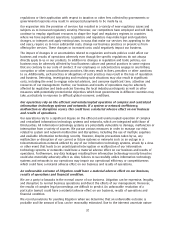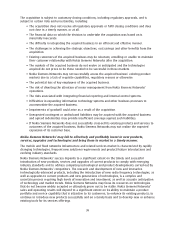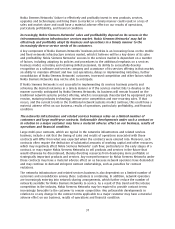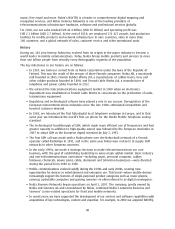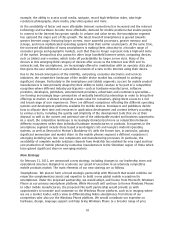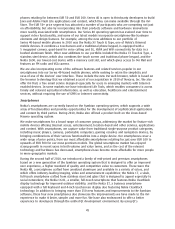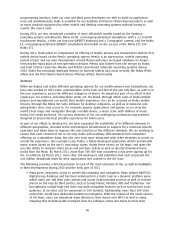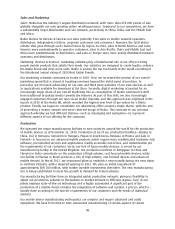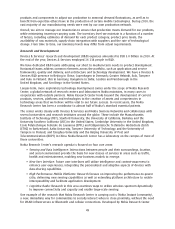Nokia 2010 Annual Report Download - page 41
Download and view the complete annual report
Please find page 41 of the 2010 Nokia annual report below. You can navigate through the pages in the report by either clicking on the pages listed below, or by using the keyword search tool below to find specific information within the annual report.music, free email and more. Nokia’s NAVTEQ is a leader in comprehensive digital mapping and
navigation services, and Nokia Siemens Networks is one of the leading providers of
telecommunications infrastructure hardware, software and professional services globally.
For 2010, our net sales totaled EUR 42.4 billion (USD 56 billion) and operating profit was
EUR 2.1 billion (USD 2.7 billion). At the end of 2010, we employed 132 427 people; had production
facilities for mobile products and network infrastructure in nine countries; sales in more than
160 countries; and a global network of sales, customer service and other operational units.
History
During our 146 year history, Nokia has evolved from its origins in the paper industry to become a
world leader in mobile communications. Today, Nokia brings mobile products and services to more
than one billion people from virtually every demographic segment of the population.
The key milestones in our history are as follows:
• In 1967, we took our current form as Nokia Corporation under the laws of the Republic of
Finland. This was the result of the merger of three Finnish companies: Nokia AB, a woodpulp
mill founded in 1865; Finnish Rubber Works Ltd, a manufacturer of rubber boots, tires and
other rubber products founded in 1898; and Finnish Cable Works Ltd, a manufacturer of
telephone and power cables founded in 1912.
• We entered the telecommunications equipment market in 1960 when an electronics
department was established at Finnish Cable Works to concentrate on the production of radio
transmission equipment.
• Regulatory and technological reforms have played a role in our success. Deregulation of the
European telecommunications industries since the late 1980s stimulated competition and
boosted customer demand.
• In 1982, we introduced the first fullydigital local telephone exchange in Europe, and in that
same year we introduced the world’s first car phone for the Nordic Mobile Telephone analog
standard.
• The technological breakthrough of GSM, which made more efficient use of frequencies and had
greater capacity in addition to highquality sound, was followed by the European resolution in
1987 to adopt GSM as the European digital standard by July 1, 1991.
• The first GSM call was made with a Nokia phone over the Nokiabuilt network of a Finnish
operator called Radiolinja in 1991, and in the same year Nokia won contracts to supply GSM
networks in other European countries.
• In the early 1990s, we made a strategic decision to make telecommunications our core
business, with the goal of establishing leadership in every major global market. Basic industry
and nontelecommunications operations—including paper, personal computer, rubber,
footwear, chemicals, power plant, cable, aluminum and television businesses—were divested
during the period from 1989 to 1996.
• Mobile communications evolved rapidly during the 1990s and early 2000s, creating new
opportunities for devices in entertainment and enterprise use. This trend—where mobile devices
increasingly support the features of singlepurposed product categories such as music players,
cameras, pocketable computers and gaming consoles—is often referred to as digital convergence.
• Nokia Siemens Networks began operations on April 1, 2007. The company, jointly owned by
Nokia and Siemens AG and consolidated by Nokia, combined Nokia’s networks business and
Siemens’ carrierrelated operations for fixed and mobile networks.
• In recent years, we have supported the development of our services and software capabilities with
acquisitions of key technologies, content and expertise. For example, in 2008 we acquired NAVTEQ,
40




